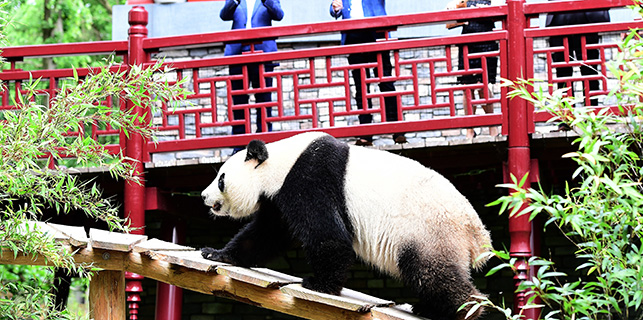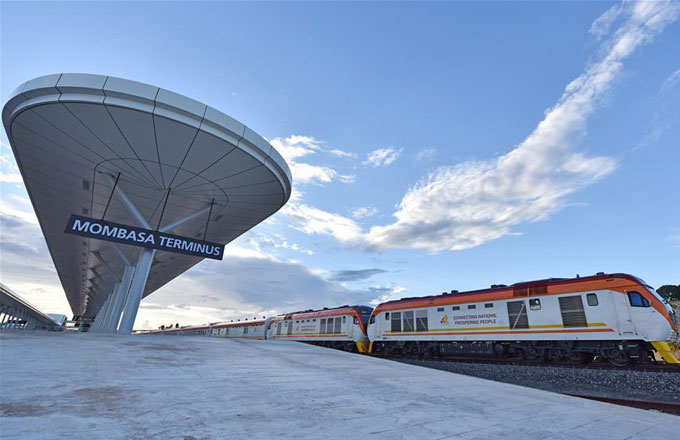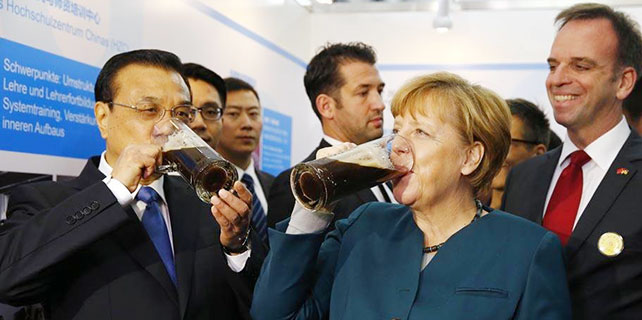Belt and Road will make Turkey-China cooperation a success
A network of caravan routes that began to be established during the Western Han Dynasty (206 B.C.–9 A.D.) used in trade and was central to the cultural exchange between the civilizations of Eurasia. Those caravan routes, stretching thousands of kilometers from east to west, were later called the Silk Road.
Since ancient times, due to its geographic location, Anatolia (Turkey) has always been a bridge between East and West, making it a natural point of confluence of the ancient Silk Road. Some of the routes of the ancient Silk Road passed through Anatolia (Turkey). Therefore, the Silk Road has always been important for Turks to the extent that Turkey developed strategies to revive the ancient Silk Road. The Caravanserai Project, for instance, was introduced in 2008 by the Republic of Turkey Ministry of Customs and Trade to increase cooperation among customs authorities of the countries along the Silk Road. This project aims to facilitate trade and transport by accelerating border crossing procedures between Turkey, China, Azerbaijan, Iran, Georgia, Kazakhstan and Kyrgyzstan.
Another endeavor unveiled by Turkey to revive the Silk Road is the Middle Corridor Initiative, which aims to create economic corridors between Turkey, China, Georgia, Azerbaijan, Turkmenistan, Kazakhstan, Afghanistan and Pakistan. Turkey and China signed a memorandum of understanding on aligning the Belt and Road Initiative and Middle Corridor Initiative with the prospect of integrating the Middle Corridor Initiative into the Belt and Road Initiative.
As can be expected, Turkey wants to be one of the pivotal countries participating in the Belt and Road Initiative. Turkish President Recep Tayyip Erdogan, ahead of his visit to Beijing to attend the Belt and Road International Cooperation Forum, said that Turkey will play a key role in the Belt and Road Initiative as a geographical and cultural bridge linking East and West, and as an indispensable partner of China. To this end, as President Xi Jinping, at the opening ceremony of the Belt and Road International Cooperation Forum, stressed that China has enhanced coordination with the policy initiatives of the relevant countries, including Turkey’s Middle Corridor Initiative. He was referring to the memorandum of understanding on aligning the Belt and Road Initiative and Middle Corridor Initiative, which was signed in 2015, and the Turkey-China Land Transport Agreement, which was signed this year.
Considering Turkey’s contribution to the 21st Century Maritime Silk Road component of the Belt and Road Initiative, the undersea Marmaray railway tunnel, which was inaugurated in 2013, enabled an uninterrupted rail connection between Beijing and London by railway via a tunnel beneath the Bosporus Strait. Another important section of the Silk Road Economic Belt is the high speed railway line between Turkey’s capital, Ankara, and Turkey’s biggest city, Istanbul, which was inaugurated in 2014. The significance of this railway line is that it is China’s first high speed railway project overseas. A consortium of Chinese and Turkish companies built the second phase of this railway line. This success is the harbinger of the future collaboration between Turkish and Chinese companies within the Belt and Road Initiative. To build on this success, the Turkish and Chinese governments have pledged to deepen cooperation on key projects, such as the high speed railway linking Edirne in Western Turkey with Kars in Eastern Turkey, spanning the country from west to east. It will constitute the backbone of the Middle Corridor Initiative and will contribute to the revival of the ancient Silk Road.
When it comes to Turkey's contribution to the 21st Century Maritime Silk Road component of the Belt and Road Initiative, Turkey and China can collaborate on two fronts. First, the Chinese company COSCO Shipping Lines in 2015 acquired the majority share in Kumport, which is Turkey’s third biggest port, handling 2.1 million twenty-foot equivalent units (TEU, a standard unit for describing a ship's cargo carrying capacity) of container cargo, so at the moment Chinese companies are already using Kumport to ship their goods to Europe. Second, Turkey wants to start construction of the Candarli Port in the Aegean Sea. Turkey has already completed the necessary infrastructure of this port, which creates the conditions for commencing construction. Candarli Port is going to handle 12 million TEUs of container cargo when it is fully completed. According to the Republic of Turkey Ministry of Transport, Maritime and Communications, Chinese firms are interested in building and operating the Candarli Port.
Since Turkey and China have abundant common interests in reviving the ancient Silk Road, it is appropriate to end this piece by quoting the Turkish Ambassador to China, Ali Murat Ersoy: “As there is no competition, but complementarity among our projects, the Middle Corridor Initiative and the Belt and Road Initiative, I don't see a reason for it — Turkey-China cooperation within the Belt and Road Initiative — not being successful.”
The author is a Turkish PhD Candidate researching the Belt and Road Initiative at the School of International Studies, Peking University.






















